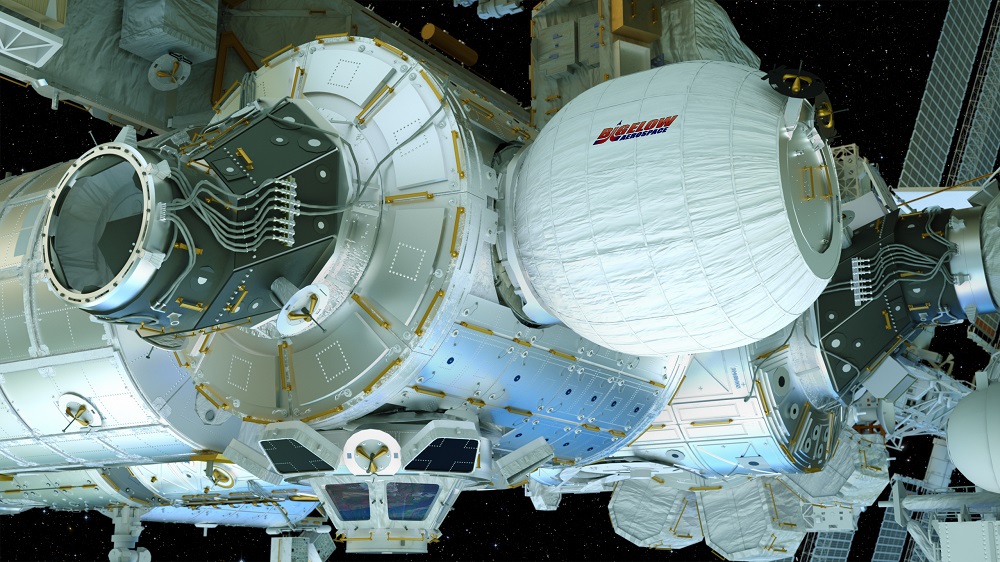
WASHINGTON — Bigelow Aerospace, the company founded more than two decades ago to develop commercial space habitats, laid off all its employees March 23 in a move caused at least in part by the coronavirus pandemic.
According to sources familiar with the company’s activities, Bigelow Aerospace’s 68 employees were informed that they were being laid off, effective immediately. An additional 20 employees were laid off the previous week.
Those sources said that the company, based in North Las Vegas, Nevada, was halting operations because of what one person described as a “perfect storm of problems” that included the coronavirus pandemic. On March 20, Nevada Gov. Steve Sisolak signed an emergency directive ordering all “nonessential” businesses to close.
A company spokesperson confirmed March 23 that the company laid off all its employees because of the governor’s order, and that it faced “fines, penalties and threats of having our business license revoked” if it remained open. The spokesperson added that the company planned to hire workers back once the emergency directive was lifted, although other sources interpreted the layoffs as a permanent measure.
Space companies in other states have been able to stay open despite similar restrictions on nonessential businesses. In California, aerospace companies have continued operations even after “stay at home” directives because aerospace manufacturing is considered an essential industry by the federal government.
Bigelow Aerospace was founded in 1999 by Robert Bigelow, who planned to use wealth he made in the real estate business to develop commercial space stations. He licensed an expandable module technology from NASA after the agency canceled a project called TransHab that had developed it.
The company launched two spacecraft to demonstrate that expandable module technology: Genesis 1 in 2006 and Genesis 2 in 2007, both on Dnepr rockets from Russia. The spacecraft proved that the modules were stable and maintained air pressure.
In 2013, the company secured a NASA contract to build a similar expandable module, called the Bigelow Expandable Activity Module (BEAM), and install it on the ISS. BEAM flew to the station on a SpaceX Dragon cargo mission in April 2016 and was installed on the station the following month. BEAM remains attached to the ISS to this day, used for storage and some additional testing.
Bigelow had long expressed an interest in developing commercial space stations using a module called the B330, so named because it offered 330 cubic meters of internal volume. The company saw the ISS as a steppingstone to that goal, and announced in April 2016 a partnership with United Launch Alliance to use ULA’s Atlas 5 to launch a B330 module to the ISS as soon as 2020.
While NASA was planning to offer a port on the ISS for a module like the B330 as far back as 2016, it was only last June that NASA announced it would solicit bids for access to that port. NASA announced Jan. 27 it had selected Axiom Space to use that port for a series of commercial modules that company expects to install starting in late 2024.
Robert Bigelow said in a Jan. 28 interview that his company declined to submit a proposal to NASA because of financing concerns. NASA, at the time of the competition, said it projected providing up to $561 million to support both a commercial ISS module as well as a separate solicitation for a free-flying facility. “That was asking just too much” of the company, Bigelow said. “So we told NASA we had to bow out.”
While Bigelow said his company was still interested in pursuing the NASA solicitation for supporting a free-flying station, which the agency has yet to release, he argued NASA needed to offer more financial support to make it feasible. “There has to be substantial government subsidies for a period of time until industries can stand on their own feet,” he said.
Related
ncG1vNJzZmiroJawprrEsKpnm5%2BifKO1xp6jqK9dlrKzu9KpmJydXaGuur%2BMqJ2fZZWjwaq%2BxGauqKqbm7yzr8Ro